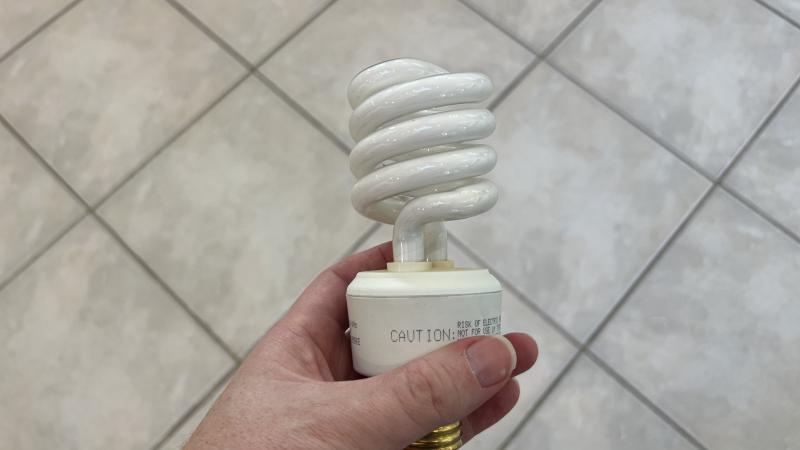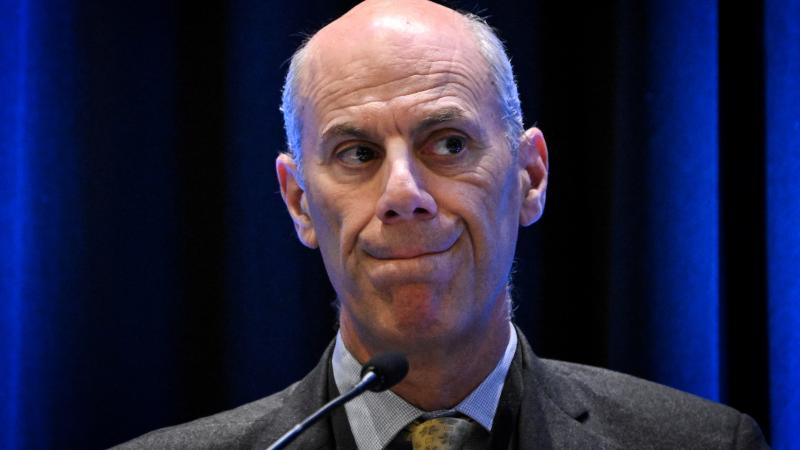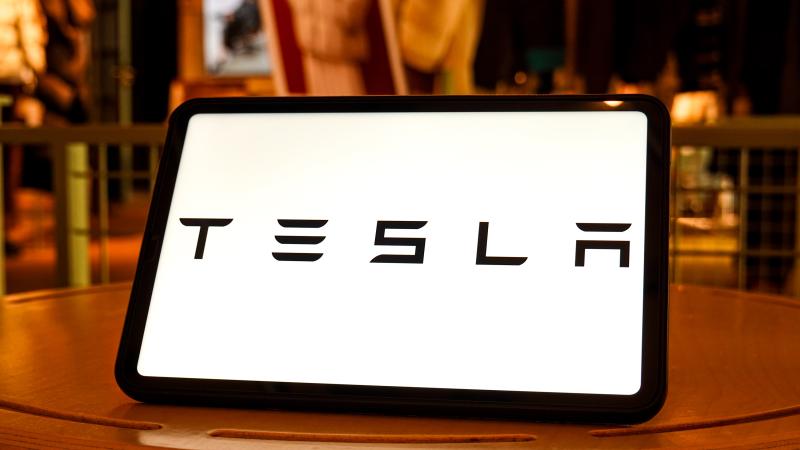With more than half the market share, Tesla's difficulties show the entire EV market is in trouble
While Musk was throwing out ideas and speaking optimistically of the future, others are raising doubts about the long-term viability of the company. Tesla could be the canary in the coal mine as to the future of EV cars.
Tesla has certainly seen better days. In 2023, Tesla sold 55% of the EVs in America, far ahead of the second-place EV seller, Ford, which sold 6% of the total EVs sold. This makes Tesla a barometer by which much of the entire market can be measured. Experts say that some of Tesla's difficulties are a result of how Tesla is run, but some of the problems are systemic to the industry as a whole.
Drop in Income, Stock clawing its way back
On Tuesday, Tesla reported a 9% drop in revenue in the first quarter, which was the largest drop the company had seen since 2012. Net income dropped 55% to $1.13 billion from a year ago, which was an even bigger drop than was seen during the 2020 pandemic. It was also below analysts’ consensus estimates, according to the Wall Street Journal.
Telsa's stock has been battered over the last week, but bulls have rallied around it. Over the past five days, shares sunk to a low of $140.90 and climbed back to $158.96 on Thursday's opening bell, according to data from Barron's. The stock's performance YTD peaked at $299.29, and its lowest point was as low as $138.00. According to Marketwatch, currently 15 analysts placed a "buy" recommendation and 22 others rated Tesla stock as a "hold." Nine analysts rate the stock as a "sell."
Autonomy
On the company’s earnings call, CEO Elon Musk said that Tesla would start production of new models in early 2025 or possibly earlier. This car, he said, would be produced with its current production lines, which would be more efficient. He had previously stated that a cheaper alternative to its current models would be available.
Musk spent much of the call reiterating the company’s plans of making a fleet of self-driving taxis, hinting that the model would be called “Cybercab.” This technology would allow Tesla owners to “add or subtract their cars from the fleet whenever they want,” Musk said. They could also restrict drivers to friends and family, or people with high ratings on the app drivers will use.
All this is contingent on the company developing fully autonomous vehicles, but Musk sounded optimistic Tesla would meet that goal.
"If somebody doesn’t believe Tesla is going to solve autonomy, I think they should not be an investor in the company," Musk said.
He also said that Tesla is “in talks with one major automaker” about licensing the software.
Aaron Turpen, an automotive journalist who has test driven and written about many models of EVs, told Just The News that he has doubts about the plan. “Almost everybody is developing their own or in collaboration. So they would stand to lose a lot of money by taking him up on this, especially with its questionable history,” Turpen said.
He said Tesla will likely achieve fully self-driving technology, but it will be further down the road than media reports make it seem. “In the media, we tend to assume that the next greatest technology is going to show up next year, because somebody talked about it this year. But it really doesn't work that way. It takes years,” Turpen said.
As an example, he pointed to regular reports of battery breakthroughs, which make it sound like these advances are a year or two away, when they’re likely a decade or more away. Especially with the potential liability issues for accidents with self-driving vehicles, it’s likely Tesla’s robo-cars are still a ways off.
Musk is also known for promising more than he delivers, as was seen with the launch of the Cybertruck, which also faced a recall this week over the accelerator sticking when pressed own. Likewise, InsideEVs reports that Musk was promising Tesla would have 1 million robo-taxis on the road by 2020.
Moonshots
While Musk was throwing out ideas and speaking optimistically of the future, others are raising doubts about the long-term viability of the company.
Tesla’s stock price was down 35% over a year ago on Wednesday afternoon, after a bump following Tuesday’s call. The company is cutting approximately 2,700 jobs in Austin, CNBC reported, as well as another 3,300 in California.
The company is facing increased competition from China, labor disputes in Europe, and sabotage from German climate activists, according to a piece in Wired, which portrays Musk as a man “better known for pulling off moonshots” than he is at running a regular car company that fights for market share.
Energy expert Robert Bryce documented on his Substack column that the company’s woes in 10 charts, which start by dispelling the belief that EVs are a new, modern technology. Bryce quotes from a 1901 Los Angeles Times article about how the electric automobile will eclipse other kinds of “motor carriages” as soon as a light-weight battery is developed. A Washington Post article from 1915 promises that “prices on electric cars will continue to drop until they are within reach of the average family.”
More than a century later, electric vehicles cost on average $5,000 more to purchase than gas-powered vehicles. While Musk is promising to produce a cheaper car in 2025, Bryce told Just The News that plan has some pitfalls.
“Every automaker knows that the cheaper the car, the smaller the profit. So, they’re going to make a cheaper car. Okay, well that may be, but it will likely mean less profit on each vehicle and therefore less profit overall,” Bryce said.
Bryce has been tracking Ford’s losses on its EV lines for months, and the company consistently posts losses over over $60,000 on each electric vehicle sold each quarter. Bryce said the company has managed to turn profits only because its gas-powered pickup lines are so profitable.
In his piece, “Tesla in Turmoil,” Bryce shows that the average age of gas-powered vehicles is rising, meaning people are hanging onto their used gasoline cars longer. According to a Gallup poll from April, 48% of Americans say they won’t buy an EV, an increase of 7% over the previous year.
Ancillary problems
Besides the brutal market, there are a number of other challenges, Bryce points out that includes producing enough electricity on the grid to charge all those EVs and sourcing the minerals to build the EVs.
Brad Munchen, an auto analyst, provides a detailed outline on his “Motorhead” Substack column of the factors that suggest that Tesla faces an increasing risk of bankruptcy. Previous bankruptcies in the automotive industry — those of General Motors, Chrysler and Nissan — all occurred when the companies weren’t offering cars consumers wanted and were cutting prices to move more units.
Munchen wrote that if a carmaker doesn’t produce full model changes every five to seven years on existing models and fails to introduce new models, sales volumes collapse. While the Cybertruck is new, it’s a niche product for North America. This makes the Model 2 — the new line Musk mentioned in the call — vitally important to Tesla’s survivability, Munchen writes.
Munchen argues that Tesla’s shift to Robo-taxis is an admission of the company’s potential demise.
“My gut feeling is that he knows he [Musk] made an epic mistake by not having rolled out a few more new models and now needs to somehow maintain Tesla’s valuation by pumping the Robotaxi ‘AI’ theme,” Munchen wrote.
Tesla cornered the market on EVs well before other automakers jumped on a fad. Now, that the early adopters are no longer supporting sales volumes and the market isn’t attracting more consumers, Tesla could be the canary in the coal mine as to the future of EV cars.
The Facts Inside Our Reporter's Notebook
Links
- sold 55% of the EVs in America
- 9% drop in revenue
- since 2012
- bigger drop than was seen during the 2020 pandemic
- according to the Wall Street Journal
- shares sunk to a low
- climbed back to $158.96
- According to Marketwatch
- Aaron Turpen
- launch of the Cybertruck
- faced a recall
- InsideEVs reports
- stock price was down 35% over a year ago
- CNBC reported
- according to a piece in Wired
- documented on his Substack
- cost on average $5,000 more
- tracking Fordâs losses on its EV lines
- Gallup poll from April
- detailed outline
















